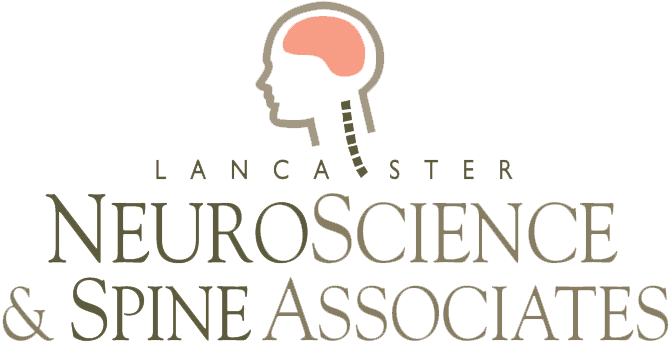Faces of Medicine: Meet Dr. Keith Kuhlengel
Dr. Keith Kuhlengel grew up on a farm in southern Illinois. His desire to help people through his education, coupled with the need for physicians in the rural Midwest, drew him to medicine. His years on a farm also instilled in him an abiding affection for farming the land, and the history of farm equipment. The combination is a remarkable fit for his life in Lancaster County, where he has been performing neurosurgery with Lancaster NeuroScience & Spine Associates since 1995.
Background
Tending beef cattle and baling hay were as much a part of Keith Kuhlengel’s early years as his strong performance in academics, and his work as a team manager in several high school sports. His parents, Ralph and Dolores, were ideal role models for hard work and team effort. By the time he was approaching college, he had outstanding grades, and a real command of cattle raising and farm equipment. When it was time for college tuition, the family would ship a load of cattle to market. Farming and medicine would remain his two fortes.
Keith Kuhlengel wanted a profession that would keep him in a continuing education process, and challenge him for a lifetime. He was drawn to medicine, and thought he’d become a family doctor. As he worked toward his medical degree at Washington University School of Medicine in St. Louis, he decided to be a neurosurgeon, and went on to complete his neurological surgery residency. It was there that he also met his wife, Barbara who was training in Psychiatry. They moved to Pennsylvania when Keith accepted a position at Penn State Hershey in 1990. In 1995, Dr. Kuhlengel joined Lancaster NeuroScience & Spine Associates. Barbara Kuhlengel is in practice at Hershey Psychiatric Associates. Their daughter, Adrian is a Family Practice Resident at Lancaster General. Their son, Trevor is in the Biomedical Engineering program at Lehigh University.
On the personal side, Dr. Kuhlengel enjoys family vacations in the great outdoors. Their excursions have taken them to Yellowstone, the Grand Canyon, Acadia in Maine, Denali in Alaska, and Hawaii Volcanoes. His musical tastes run to old time rock & roll, and contemporary country music. His favorite non-medical reading is any book or article that is related to antique tractors. Currently it’s “the Science of Successful Threshing”. He expands on that interest in his commentary below.
In his own words…
On being a neurosurgeon, and the delivery of medical care
“I think the profession definitely attracts type A personalities. A complex surgery, like a major reconstruction, or an aneurysm, can take many hours, with no break. It requires uncompromised focus and the ability to stay focused.
“If I weren’t a surgeon, I would likely be in rural medicine, which was my original goal. That’s what I put on my medical school application, because at the time there was a shortage of doctors. Since then, schools in rural populations have set up programs to draw primary care physicians.
“I have a very good mix of patients, and my goal is to treat each one the way I would want a member of my family to be treated. I try to show them that all medical problems – hypertension, cholesterol, spinal disorders, disc degeneration—are all related to their weight and level of physical activity. Of course, I try to get the smokers to quit, which is very hard for most people to do. Smoking has been shown to cause more back pain.
“I am very surprised and pleased with how strong the medical community in Lancaster is. When you call for a consultation, you get a board certified pulmanolgist, or cardiologist, or whatever specialist you need, and a decision is made quickly based on a very broad base of experience. It’s ideal.
“The biggest changes have come with the HMO’s and dealing with the paperwork. As physicians, we take our patients through all the testing, we feel that we clinically understand the patient’s condition, and we may recommend a certain surgery, and they come back and say they don’ agree. There is increasingly more control by the HMO’s, more dictation about what they will and will not approve.
“I think the problems that we are experiencing over the high cost of physicians’ liability insurance will begin to affect states that haven’t experience it so far. Right now, state by state, there is a disparity. I can give you two examples from personal observation. I was amazed, last time I went home to Illinois, to read an article in the local paper about an orthopedist from Philadelphia who flies in and has a four-day-a-week practice there. The difference in malpractice insurance costs in Illinois compared to Pennsylvania allows him to own a home out there, and fly back and forth. And I have seen St. Louis suffer the consequences as well. A major trauma center there had to give up its neurosurgery designation in 2003, due to high malpractice insurance rates. The insurance cost was $424,000, and their income was $400,000, so the two practicing neurosurgeons moved out of the state.”
On his work with spinal fusion
“I specialize in intra-cervical procedures, and recently participated in a study to evaluate a new approach to spinal fusion, called carbon fiber cage fusion. This method uses a hollow threaded titanium or carbon fiber cylinder to fuse two vertebrae together. We remove the diseased disc and insert two interbody cages in the opening where the diseased disc was. The cages are filled with bone graft. The bone grows through the holes in the cages fusing the vertebrae.
The standard spinal fusion surgery requires the harvesting of bone graft from the patient’s hip area. This study used bone graft substitute that give us reason to hope that we can avoid harvesting the patient’s bone, which carries inherent risks – post-operative pain, infection. From the surgeon’s perspective, it shortens the patient’s time in surgery, which reduces the complication rate. From the patient’s perspective, they don’t have a second incision, so their hospital stay is shortened, and they can move about more easily.
There will be a two-year follow-up, and the results of the study are in the hands of the FDA. We will want to know, based on those results, if the fusion rate is high, and if risk is reduced. What we learn will be important to patients considering spinal fusion, for spine surgeons, and for the entire health care industry.”
On farming… and antique tractors
“My hobby is antique tractors, and I’m a member of Rough and Tumble which is an historical agricultural society located in Kinzers. There is a strong national following for threshers, and antique farming equipment, with shows all around the country. Rough and Tumble claims to be the most complete show east of the Mississippi.
This is an amazing group of people, salt of the earth. They hold a pageant every summer – demonstrating flailing, cradling, and winnowing grain by hand like they did in ancient Egypt. Then they move up to the groundhog thresher, using Belgian horses to power the thresher, then up to steam engines, hit and miss engines, model T Ford’s driving the machine, and then to the big gas tractors. Most of the threshing crewmembers are in the 70’s and 80’s. Last year they asked me to be the pageant announcer, and I’m going to do it again this year. It’s like stepping back 80 years. History is being passed down, and I enjoy being a part of it.”




